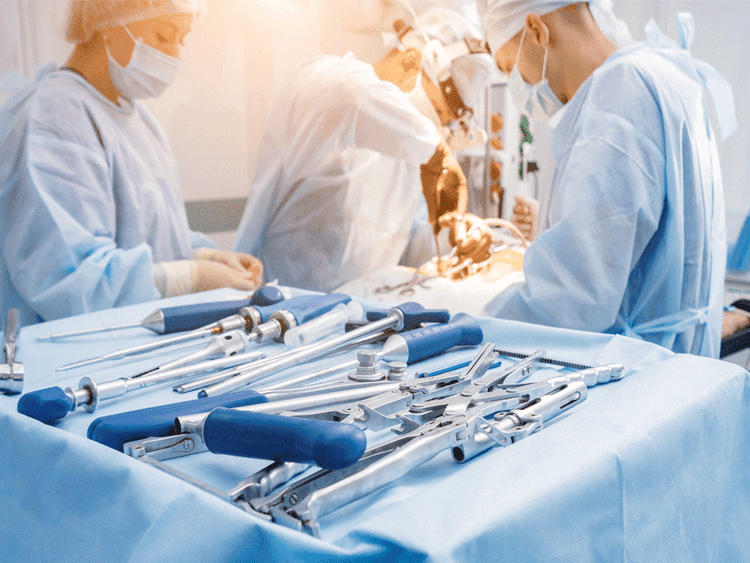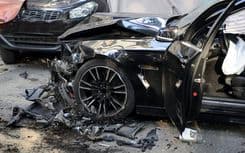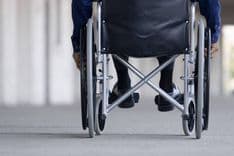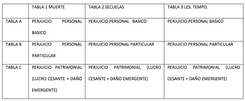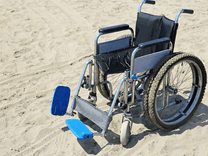Many people are unaware that they are entitled to compensation if, after suffering serious injuries in a traffic accident, they need an operation. Compensation for surgery due to a traffic accident is contemplated in Law 35/2015, of 22nd September, which is why it was included for the first time in the 2016 schedule of rates.
This type of compensation is formally called "personal injury due to surgery". It is included in the item intended to compensate the basic personal injury, just like the compensation for days of admission to the ICU, hospital admission or days of sick leave.
We want to answer all your questions, so we have prepared this guide to explain everything you need to know about compensation for surgery.
What is considered a surgical operation?
Although it is commonly called surgery, it is actually correct to speak of an operation or surgical operation, since it involves operating, either totally or partially, on a wound or injury caused in this case by a traffic accident.
The aim of a surgical operation is to diagnose, treat or rehabilitate the damage, regardless of whether its extent is greater or lesser, with the help of specialised instruments, local or general anaesthesia, and the necessary disinfection and sterilisation measures.
How is compensation for surgery in a traffic accident calculated?
According to the system for the valuation of damages caused in traffic accidents, the calculation of the compensation with which the injured party will be compensated for each of the surgical operations required will depend on their complexity, whether their life is in danger, the type of anaesthesia to be used and the technical characteristics of the operation.
Article 140 of Law 35/2015 of 22nd September includes a table indicating a minimum and a maximum amount for each type of operation. According to this, each surgery can be compensated with a minimum of €400 and a maximum of €1,600.
Therefore, in order to calculate this type of compensation, it is very important to determine which Surgical Operation Group the operation belongs to, so below we will see what this is and how it works.
Group of surgical operations and how it works
Taking into account what we have seen in the previous section, a Group of Surgical Procedures is a category in which a series of operations or procedures are classified according to their characteristics, complexity, etc. Therefore, in order to be able to calculate the exact amount of compensation, it is necessary to classify the procedure suffered by the victim in a specific group.
For this purpose, the Terminological Classification and Codification of Medical Acts and Techniques establishes nine groups or categories, as follows:
- Group 0 (from 400 to 500 €): suture of wounds or treatment and cleaning of burns.
- Group 1 (from 501 to 600 €): simple bone fracture or extraction of foreign bodies in the face and neck, among others.
- Group 2 (from 601 to 700 €): among others, suture of serious wounds, muscle tears or orthopaedic mobilisation of shoulder, knee, etc., under anaesthesia.
- Group 3 (from 701 to 850 €): muscle tears, medium burns or joint injuries without fracture, among others.
- Group 4 (from €851 to €1,000): including tendon ruptures, ligament reconstruction, open fractures or amputation of limbs.
- Group 5 (from €1,001 to €1,150): serious fractures or dislocations, herniated discs, etc.
- Group 6 (from €1,151 to €1,300): bone, muscle or skin grafts, among others.
- Group 7 (from €1,301 to €1,450): transplants and complex reconstructions, among others.
- Group 8 (from €1,451 to €1,600): surgical correction of the spine, reimplanted limb, among others.
However, it is sometimes difficult to classify a surgical operation in a specific group, which is why the procedure of a medical expert and a lawyer specialising in road accident compensation is necessary.
Can surgical operation overlap with other concepts?
Compensation for surgical operation is an autonomous and independent item within the section that compensates the basic personal damage suffered due to temporary injuries caused by a traffic accident. That is to say, this concept does not overlap with any other concept, therefore, the days of hospitalisation or the sequelae that are a consequence of this operation must be valued and compensated separately under other items.
Most frequent road traffic accident injuries requiring surgery
In traffic accidents, whether by car, motorbike or moped, there are always a series of injuries that are repeated more frequently and that usually require surgical operation:
- Concussions and other head contusions.
- Nasal fractures and severe blows to the face.
- Simple or open fractures, especially in the lower limbs.
- Burns of varying degrees.
- Crushing or amputation of a limb.
Different surgeries, separate compensation.
Sometimes, there are injuries that require more than one surgical intervention for their treatment, stabilisation or rehabilitation. Therefore, the injured person can claim compensation for each of the operations needed to repair the damage suffered in a traffic accident. Furthermore, there is no maximum number of operations that can be compensated, but rather each and every one of them can be claimed.


